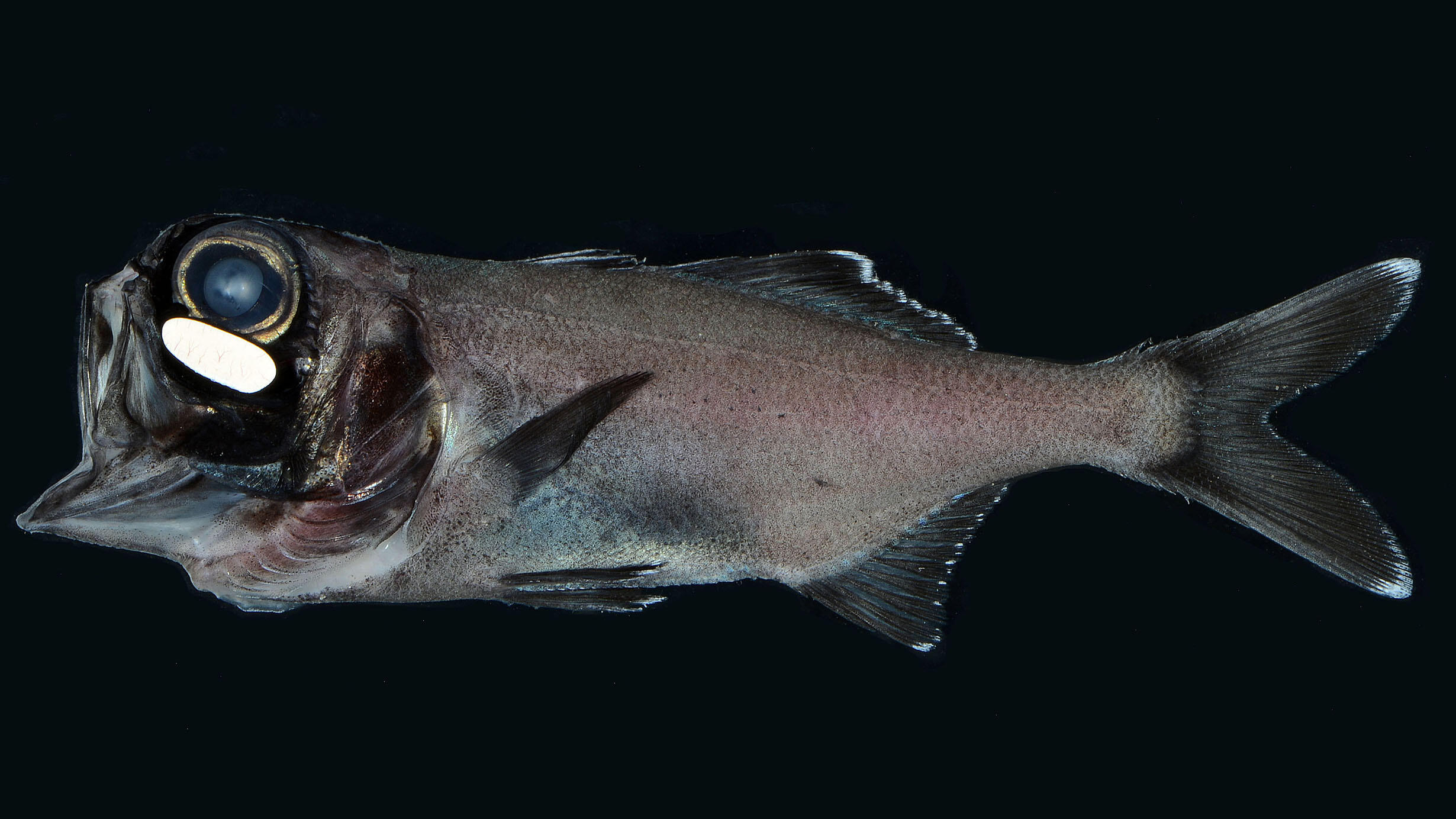 Pockets under the eyes of an adult flashlight fish (Anomalops katoptron) are filled with bioluminescent bacteria, which allows this species to “flash” in the dark.
Pockets under the eyes of an adult flashlight fish (Anomalops katoptron) are filled with bioluminescent bacteria, which allows this species to “flash” in the dark.The aptly named flashlight fish (Anomalops katoptron) has its own built-in headlamps: pockets under its eyes, filled with bioluminescent bacteria, that “flash” in different patterns.
But, until recently, researchers had not observed that this species, which spends its days in reef crevasses and emerges only on moonless nights, can use bioluminescent flashes to facilitate schooling behavior. In 2013, scientists on the Museum’s Explore21 Expedition documented a large aggregation in the Solomon Islands schooling in complete darkness. The team returned in 2016 and 2019 for additional observations—and recorded flashlight fish using their glow to school in pitch-black waters.
Their research revealed for the first time that flashlight fish were schooling using bioluminescent bursts of light, confirming that this group’s coordinated swimming behavior is possible in dark waters without external light sources. “It was simply astonishing,” says John Sparks, a curator in the Museum’s Department of Ichthyology and senior author of a new study published this week in the journal PLOS ONE. “We observed thousands of flashlight fish using synchronized bioluminescent flashes to coordinate their movement and facilitate schooling behavior in complete darkness, a behavior and function that had not previously been reported for bioluminescence.”
In the video below, Museum researchers captured schooling flashlight fish using low-light and custom-built high-resolution cameras.
© J. Sparks
Scientists estimate that more than 25 percent of the world’s fish species school, a highly coordinated swimming behavior that confuses predators and helps maximize access to food and mates. In order to school, individual fish closely track the movements of their immediate neighbor—often visually, which is why fish schools are known to disperse in low-light conditions.
Bioluminescence, visible light generated by living things through a chemical reaction, is generated for the flashlight fish by the bacteria in their eye pockets. The flashlight fish manipulate their light emission with an organ, allowing the fish to “flash” different patterns.
To avoid disturbing the flashlight fish practicing the behavior in their natural environment during the study, researchers avoided using artificial light to capture the phenomenon at night. Instead, divers and a three-person submarine used a suite of low-light cameras, including a custom-built underwater high-resolution camera, to observe and record the fish. Analyzing field video recordings and modeling showed that the flashlight fish were indeed schooling using bioluminescence, without relying on ambient light—a finding that was as much a source of wonder as it was a surprise.
“Being in the middle of one of these bioluminescing schools was one of the most magical things I’ve ever experienced as a marine biologist,” says the study’s lead author David Gruber, a professor of biology at Baruch College and a research associate at the Museum.